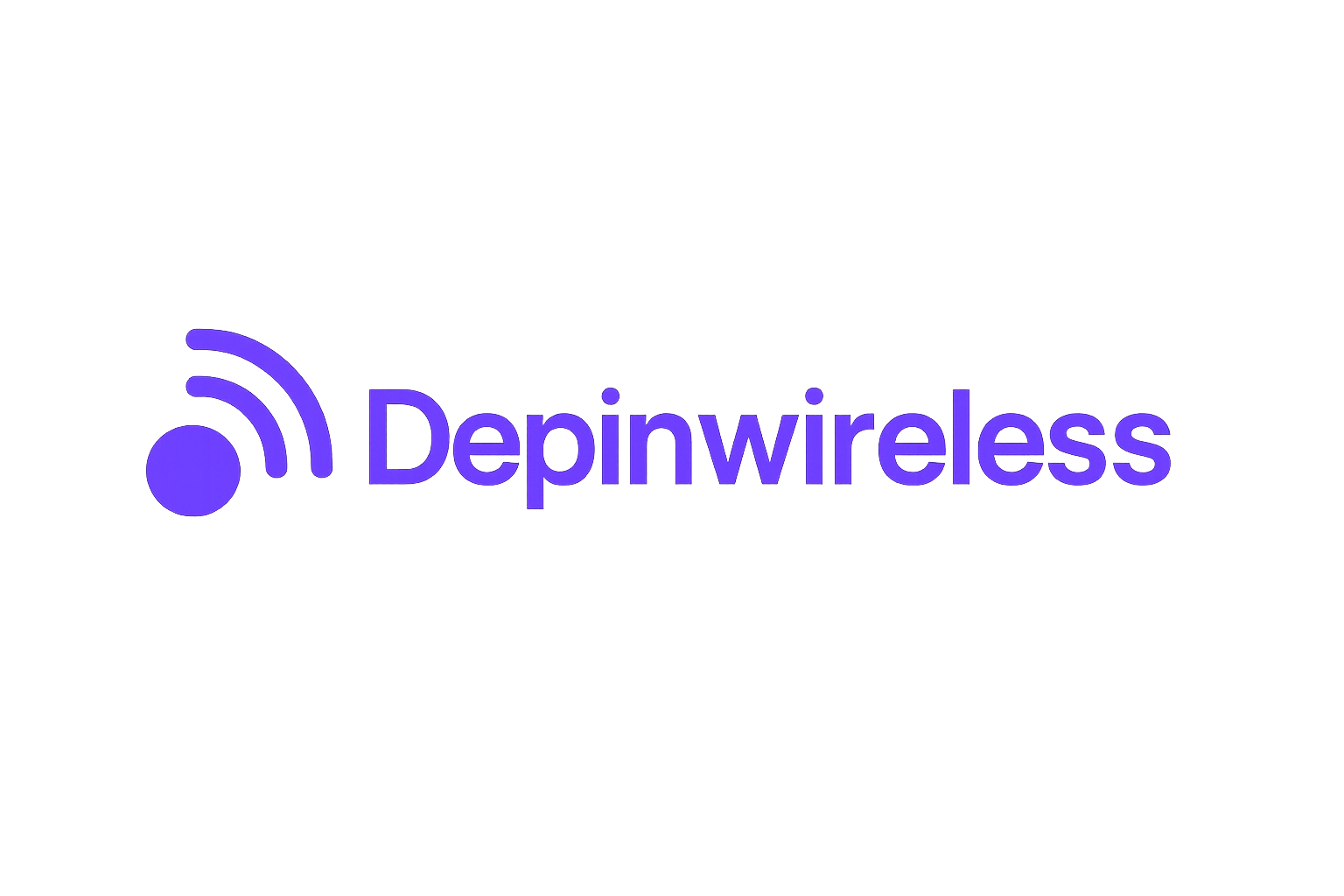
Helium’s community-owned wireless network is rapidly carving out a disruptive space in the trillion-dollar telecom industry. By leveraging decentralized infrastructure, blockchain incentives, and strategic partnerships with major carriers, Helium is rewriting the rules of wireless connectivity. The momentum is measurable: as of Q4 2024, the Helium Network offloaded over 576 TB of data from US mobile carriers, a staggering 555% quarter-over-quarter increase. This surge signals a fundamental shift in how wireless networks are deployed, operated, and monetized.

Decentralized Infrastructure: Efficiency at Scale
Traditional telecoms rely on expensive, centralized assets, cell towers, spectrum licenses, and proprietary backhaul. These legacy models drive up consumer costs and create coverage gaps in both urban and rural areas. Helium flips this paradigm by crowdsourcing network deployment to individuals and small businesses. Each Helium hotspot costs roughly $250–$300 to deploy and consumes minimal energy compared to macro-cell towers. Operators earn HNT tokens for providing coverage and transferring data, incentivizing rapid network growth without the overhead of legacy players.
This model has proven highly scalable: by mid-2025, over 62,000 hotspots are operational worldwide, supporting more than 800,000 daily users. The cost savings are significant, Helium’s operational expenditures are estimated at up to 80% lower than those of traditional telcos. For a deeper dive into how these hotspots power next-generation networks, see our technical breakdown.
Strategic Partnerships Fuel Adoption
The decentralized model is not just theoretical; it’s being validated by major telecom operators integrating Helium’s infrastructure into their service portfolios:
- AT and amp;T: In April 2025, AT and amp;T partnered with Helium to allow subscribers seamless access to the community-built Wi-Fi network across the United States. This move demonstrates how decentralized networks can augment traditional coverage while reducing capital expenditure.
- Telefónica’s Movistar (Mexico): Movistar now leverages Helium’s network to extend affordable coverage to over two million subscribers, especially impactful in underserved regions where building new towers is cost-prohibitive.
This hybrid approach, combining carrier-grade reliability with grassroots deployment, accelerates adoption while lowering costs for operators and end-users alike.
Expansion Into 5G and Last-Mile Broadband
Helium isn’t stopping at IoT connectivity or Wi-Fi offload. The network has aggressively expanded into decentralized 5G infrastructure. Individuals can now deploy plug-and-play 5G hotspots that relay mobile data traffic locally before routing it through Helium’s blockchain-coordinated mesh. This enables affordable local coverage without waiting years for traditional rollouts.
The January 2025 partnership with DAWN, a decentralized broadband protocol, aims to deliver fully decentralized last-mile internet solutions by fusing Helium’s wireless access layer with DAWN’s broadband nodes. The goal: affordable internet for all, powered by community incentives rather than top-down monopolies.
Tokenomics: Incentivizing a New Breed of Network Operator
The engine behind this explosive growth is the Helium Network Token (HNT). At its current price of $2.49, HNT rewards are distributed based on real-world utility, the volume of data transferred through each hotspot, not mere speculation or mining power. This aligns operator incentives directly with network performance and user adoption.
6-Month Price Performance of Helium (HNT) vs. DePIN & Major Crypto Assets
Comparing Helium’s price performance against other DePIN tokens and major cryptocurrencies since Q1 2024 (as of 2025-10-31)
| Asset | Current Price | 6 Months Ago | Price Change |
|---|---|---|---|
| Helium (HNT) | $2.49 | $2.02 | +23.3% |
| Filecoin (FIL) | $1.51 | $1.54 | -1.9% |
| Render Token (RNDR) | $2.24 | $2.33 | -3.9% |
| Akash Network (AKT) | $0.7060 | $0.7860 | -10.2% |
| IoTeX (IOTX) | $0.0112 | $0.0115 | -2.9% |
| New Kind of Network (NKN) | $0.0177 | $0.0180 | -1.5% |
| Ethereum (ETH) | $3,828.08 | $2,488.00 | +53.9% |
| Bitcoin (BTC) | $109,452.00 | $60,000.00 | +82.4% |
Analysis Summary
Over the past six months, Helium (HNT) has outperformed most DePIN tokens, posting a strong +23.3% gain. In contrast, other DePIN assets like Filecoin, Render Token, Akash Network, IoTeX, and NKN have experienced modest declines. Major cryptocurrencies Bitcoin and Ethereum have seen the largest gains, with Bitcoin up +82.4% and Ethereum up +53.9%.
Key Insights
- Helium (HNT) is the only DePIN token in this comparison to show significant positive price growth (+23.3%) over the last six months.
- All other DePIN tokens listed (FIL, RNDR, AKT, IOTX, NKN) experienced negative price changes, ranging from -1.5% to -10.2%.
- Bitcoin and Ethereum outperformed all DePIN tokens, with Bitcoin leading at +82.4% and Ethereum at +53.9%.
- Helium’s strong price performance coincides with major network growth, strategic telecom partnerships, and expansion into 5G and broadband.
This comparison uses exact real-time market prices and 6-month historical prices as provided, with percentage changes calculated directly from these data points. No estimates or external sources were used.
Data Sources:
- Main Asset: https://coinmarketcap.com/currencies/helium/
- Filecoin: https://www.coingecko.com/en/coins/filecoin
- Render Token: https://coinmarketcap.com/currencies/render/
- Akash Network: https://www.coingecko.com/en/categories/depin
- IoTeX: https://www.coingecko.com/en/coins/iotex
- Ethereum: https://assets.coingecko.com/reports/2025/CoinGecko-2025-Q2-Crypto-Industry-Report.pdf
- Bitcoin: https://www.coingecko.com/en/coins/bitcoin
- New Kind of Network: https://www.coingecko.com/en/coins/nkn
Disclaimer: Cryptocurrency prices are highly volatile and subject to market fluctuations. The data presented is for informational purposes only and should not be considered as investment advice. Always do your own research before making investment decisions.
This tokenomics model has already demonstrated its effectiveness: daily active users nearly doubled from one million to almost two million within six months in early 2024,2025. Over $1 million in grants have been funded to accelerate ecosystem growth and developer engagement, a figure set to rise as new use cases emerge for DePIN-powered infrastructure.
Helium (HNT) Price Prediction 2026-2031
Professional Outlook Based on Market Adoption, Partnerships, and Network Growth
| Year | Minimum Price | Average Price | Maximum Price | % Change (Avg.) vs. Previous Year | Key Scenario Insights |
|---|---|---|---|---|---|
| 2026 | $2.15 | $2.88 | $4.10 | +15.7% | Potential volatility as the market digests rapid 2024-25 growth; consolidation likely before next uptrend. |
| 2027 | $2.45 | $3.45 | $5.20 | +19.8% | Further adoption from telecom partnerships and expanding 5G/broadband footprint; increased regulatory clarity. |
| 2028 | $2.80 | $4.20 | $6.70 | +21.7% | Accelerated user growth as decentralized wireless gains mainstream acceptance; global expansion. |
| 2029 | $3.25 | $5.20 | $8.40 | +23.8% | Potential bull market and increased IoT integration drive demand for HNT; competitive threats emerge. |
| 2030 | $3.80 | $6.10 | $10.30 | +17.3% | Decentralized internet services mature; Helium considered a key backbone for IoT and smart cities. |
| 2031 | $4.10 | $6.80 | $12.00 | +11.5% | Market stabilization with HNT as a leading DePIN asset; price influenced by network utility and global economic cycles. |
Price Prediction Summary
Helium (HNT) is positioned for steady, progressive growth through 2031, driven by its disruptive community-owned wireless network model, major telecom partnerships, and ongoing expansion into 5G and broadband. While price volatility is expected, especially during market consolidations or broader crypto cycles, the long-term outlook remains bullish with increasing adoption and real-world utility. Conservative estimates suggest HNT will more than double on average by 2031, with upside potential if network effects accelerate.
Key Factors Affecting Helium Price
- Continued growth in network adoption and hotspot deployment
- Expansion of major telecom partnerships (e.g., AT&T, Telefónica)
- Success of 5G and broadband integration with DAWN
- Regulatory developments impacting DePIN and crypto markets
- Increased global demand for affordable, decentralized internet
- Competition from other decentralized and traditional telecom providers
- Market cycles and overall cryptocurrency sentiment
- Sustained utility and tokenomics incentives for HNT holders and miners
Disclaimer: Cryptocurrency price predictions are speculative and based on current market analysis.
Actual prices may vary significantly due to market volatility, regulatory changes, and other factors.
Always do your own research before making investment decisions.
What sets Helium apart is its ability to translate grassroots network participation into tangible, real-world impact. The proof is in the data: from Q3 to Q4 2024, the network’s offloaded data volume grew from 88,000 GB to over 576 TB, a 555% quarter-over-quarter jump. This isn’t a theoretical disruption; it’s a measurable transfer of market share from legacy telecoms to a decentralized alternative.
Helium’s rapid expansion is also reflected in its subscriber base. By Q4 2024, Helium Mobile reported a 7% growth in subscribers, surpassing 124,000 users for unlimited talk and text services. Winning accolades such as the Best Wi-Fi Startup at the Wi-Fi NOW Awards further cements Helium’s position as a credible challenger to established wireless brands.
Why Community Ownership Matters
Legacy telecoms have long struggled with coverage deserts and high costs due to centralized infrastructure. By contrast, Helium’s community-owned model democratizes both access and rewards. Anyone can become a network operator by deploying a hotspot, earning HNT tokens for providing real coverage where it’s needed most. This approach not only reduces infrastructure costs but also fosters local economic empowerment.
The open-source ethos is another key differentiator. Through initiatives like OpenWiFi™, Helium enables interoperability and transparency across hardware vendors and software stacks, lowering barriers for new entrants while accelerating innovation cycles.
As the DePIN (Decentralized Physical Infrastructure Networks) movement gains traction globally, Helium stands out as an early proof point for real-world crypto utility, bridging the gap between blockchain incentives and everyday wireless connectivity.
Challenges Ahead, and Why They’re Surmountable
No disruptive technology comes without hurdles. Regulatory uncertainty around spectrum use, competition from well-funded telcos, and technical challenges in scaling decentralized networks all pose risks. However, Helium’s pragmatic approach, focusing on partnerships with incumbents rather than zero-sum competition, positions it well to navigate these complexities.
Moreover, ongoing investments such as the $50 million in grants committed by May 2025 signal strong ecosystem support for continued R and amp;D and deployment incentives. The roadmap ahead includes doubling operational hotspots by end of 2025 and expanding integrations with global carriers, a realistic target given current momentum.
The Road Ahead: Scaling Decentralized Wireless Globally
As of October 31,2025, HNT trades at $2.49, reflecting sustained investor confidence amid rapid user adoption and technological milestones. With daily active users nearing two million and partnerships spanning North America to Latin America, Helium has demonstrated that decentralized wireless isn’t just viable, it’s scalable at a global level.
The next phase will likely see increased adoption of decentralized broadband solutions, deeper carrier integrations, and new applications emerging across IoT verticals, from smart cities to industrial automation. For those seeking more technical details on urban deployments or IoT integration strategies, see our deep dives on urban wireless decentralization or IoT connectivity in smart cities.

The bottom line: community-owned wireless networks like Helium are not just disrupting traditional telecom, they’re rebuilding connectivity from the ground up using open standards, transparent incentives, and global collaboration.




